Jean Dubreuil was a French mathematician, writer, and essayist. He was the son of a bookseller and a student of architecture. During his lifetime, which spanned from 1602 to 1670, he produced many works that focus on the theory and practice of perspective. His most famous book – this copy of which is the fourth edition – is The Practice of Perspective: Or, An Easy Method of Representing Natural Objects According to the Rules of Art. This fourth edition was translated by E. Chambers and printed in London, in 1726, for two members of a well-established print- and map-selling family, Thomas and Carington Bowles.
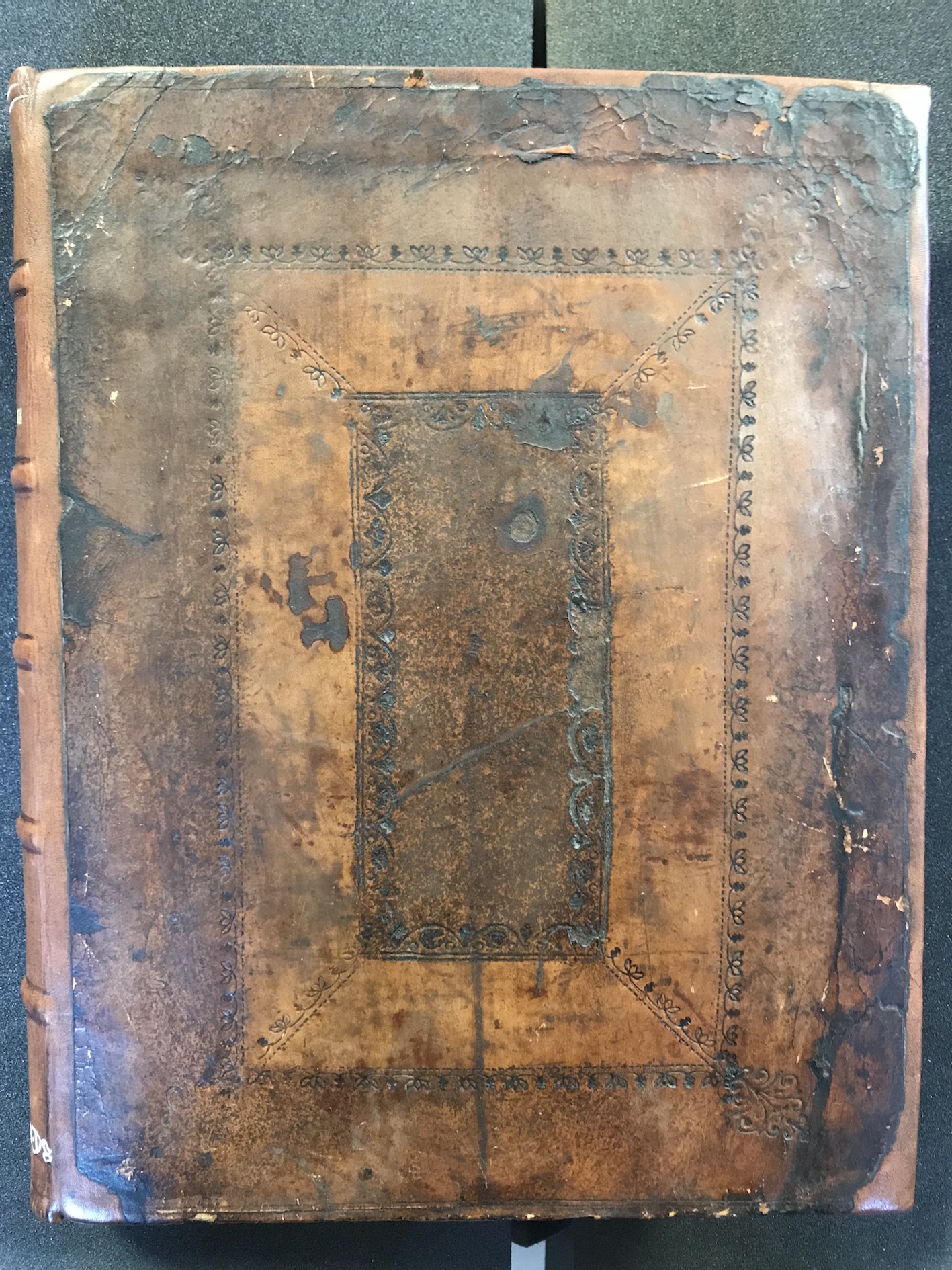
As Dubreuil notes in the title page of his book, the one hundred and fifty copper plate illustrations break down the depiction of perspective in the following subjects: figures, landscapes, gardens, buildings, and their appendages, parts, and furniture.
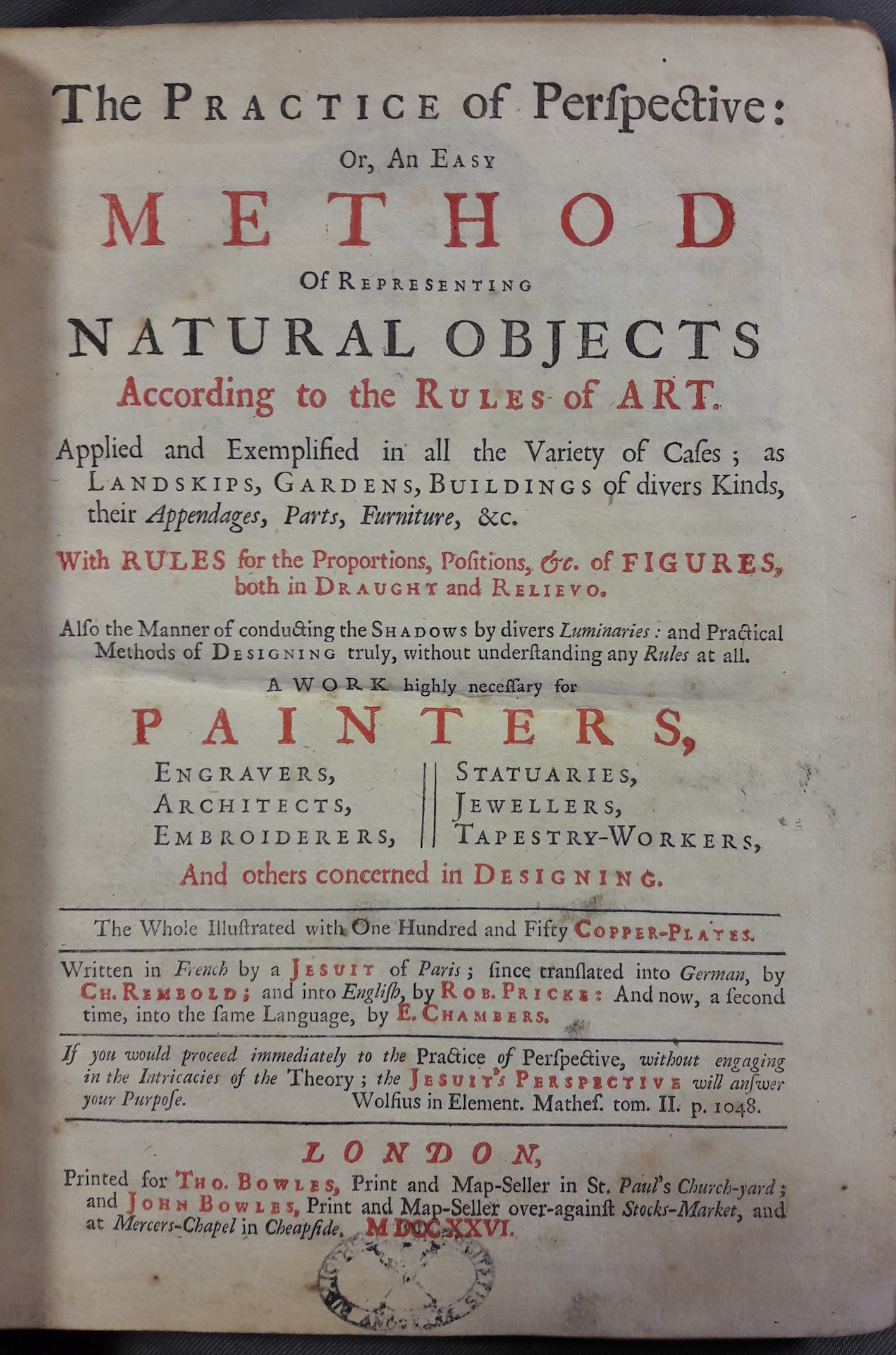
The text and illustrations work together to clarify the underlying mathematical principles of perspective, also rendering them accessible for non-mathematicians, designated in the text as ‘designers’. The pointed coordination of text and image reflects a more widely-held frustration about the difficulty of bridging the theory and practice of perspective.
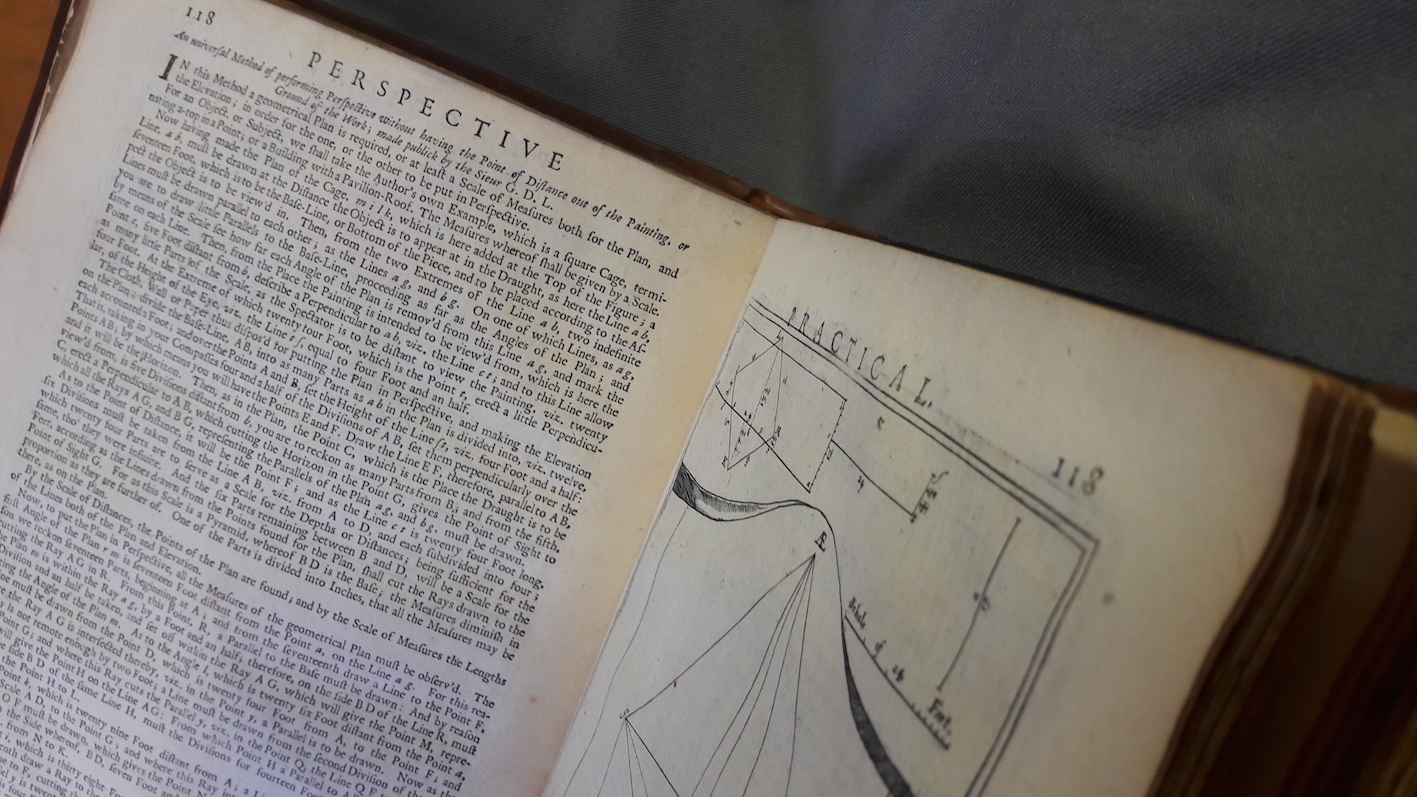
The theoretical mathematicians were blamed for not trying hard enough to make their work understandable, and the practitioners were faulted for not being patient in their attempts to understand. In order to make the text more accessible to practitioners, Dubreuil does not include a single mathematical equation. Each illustration also adheres to this purpose: rather than abstract diagrams, they are largely applications (“The Practice of”) perspective rules. In doing so they appeal not only to theorists, but also to painters, engravers, architects, embroiderers, statuaries, jewelers, and tapestry-workers.
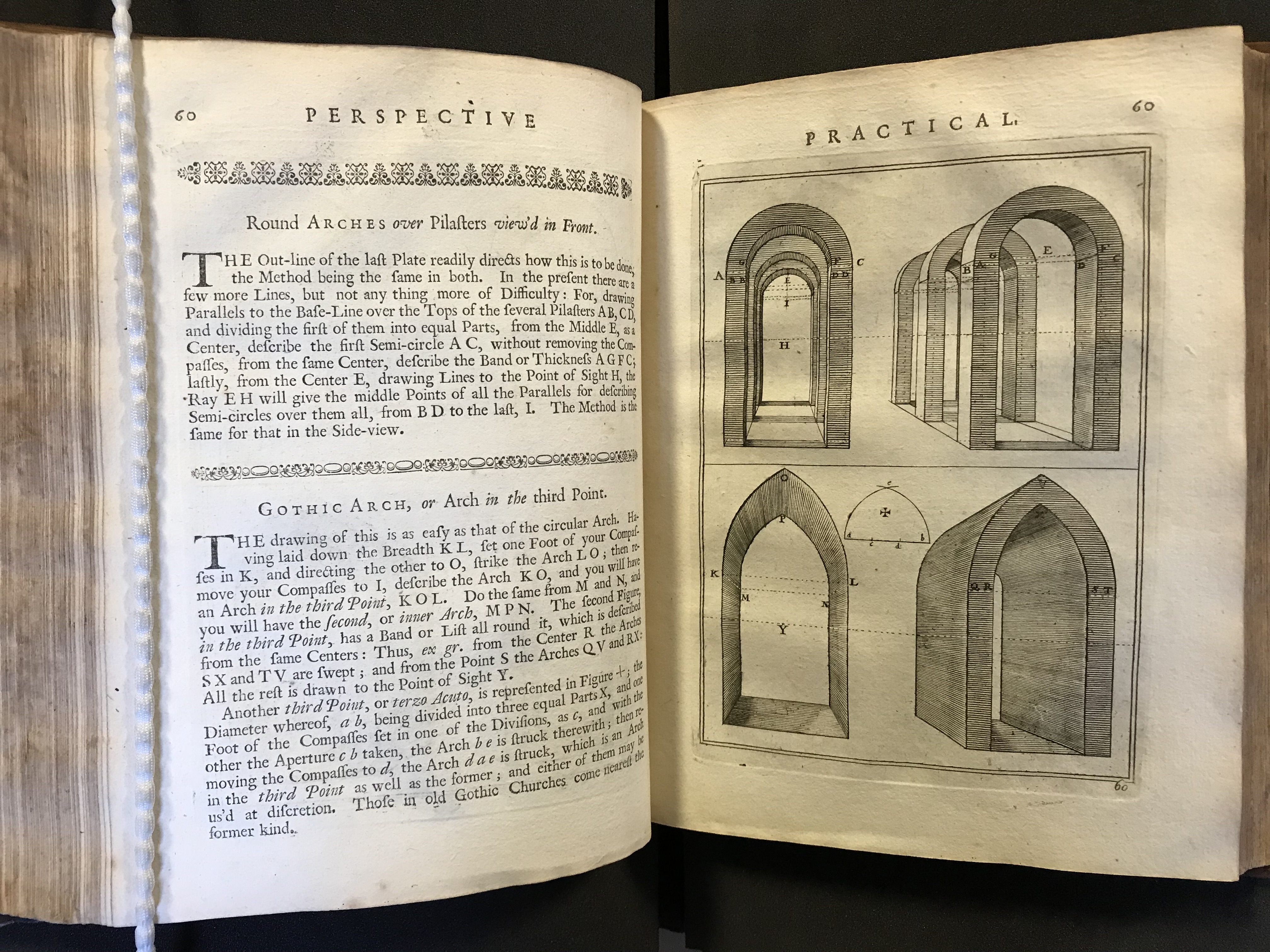
Dubreuil approaches each topic of perspectival enquiry in a logical sequence, such that across a single section they build upon one another in complexity. For example, when describing how to represent moveable objects in perspective, Dubreuil first gives plans and elevations of ‘moveables’, explains how to represent them in perspective in order, then how to represent them in perspective without order, and finally how to represent them in perspective when toppled on the ground.
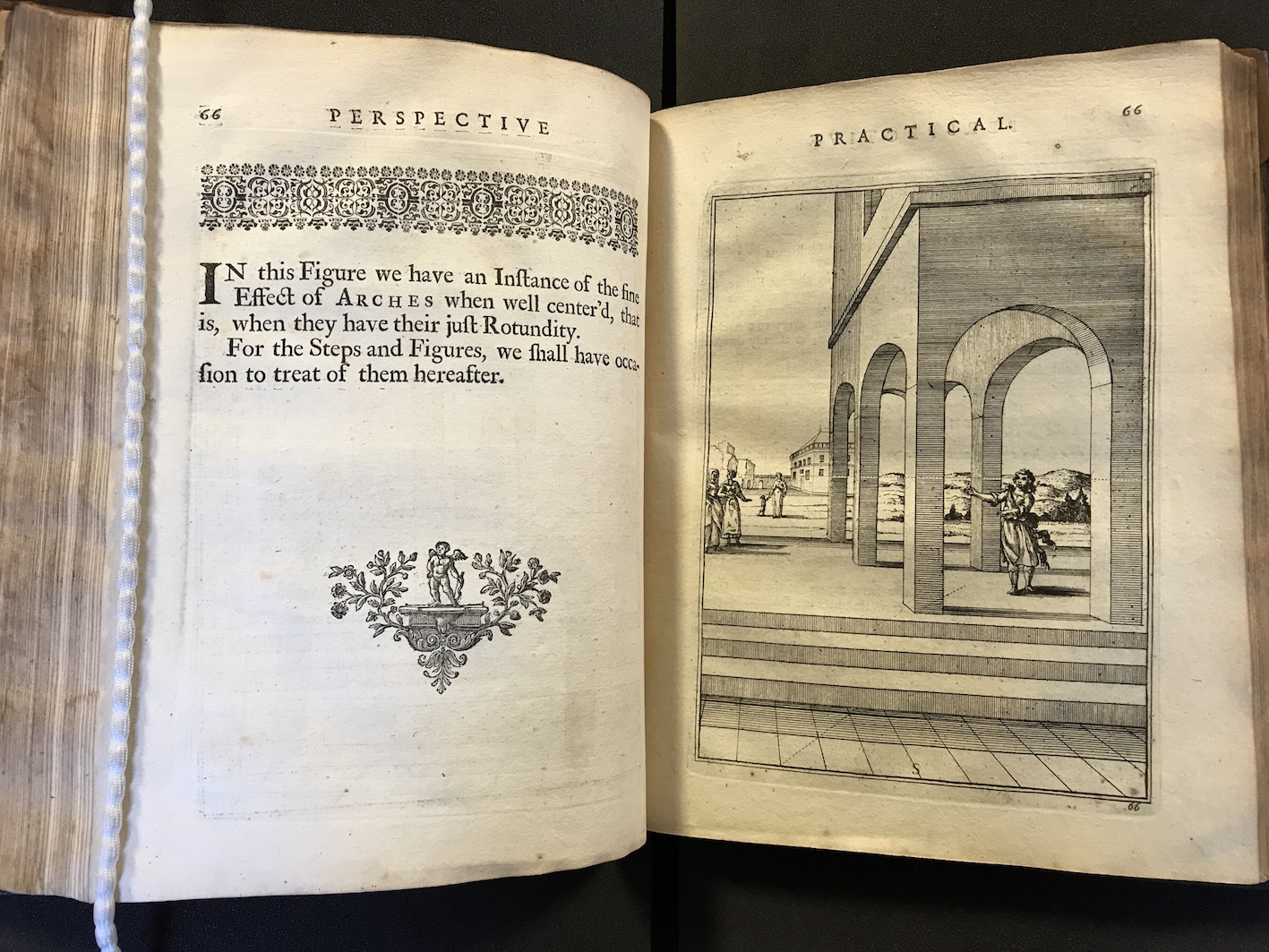
Yet each two-page spread also functions autonomously, with the left page devoted to text and the right page bearing a related illustration. The two pages that comprise each spread do not function independently from one another; rather than reading them sequentially (the second, albeit, an image), the reader is encouraged to consult both pages simultaneously, in relation to one another. Letters embedded in the prose of the text are coordinated with points on the diagrammatic illustration on the opposite page. Moreover, these pages are numbered in accordance to the numbering of the illustrative plate such that both pages share the same page number (duplicate pagination).
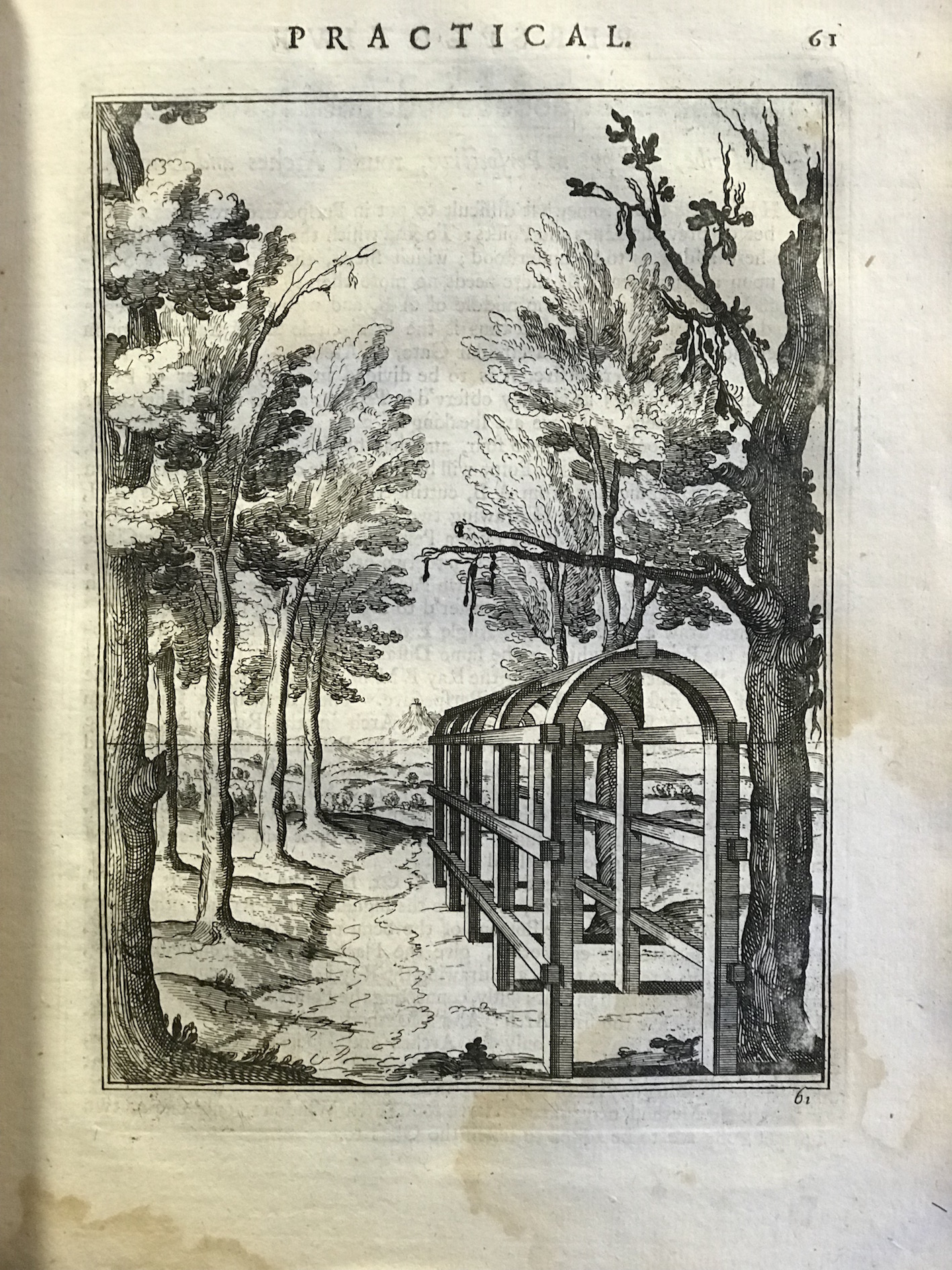
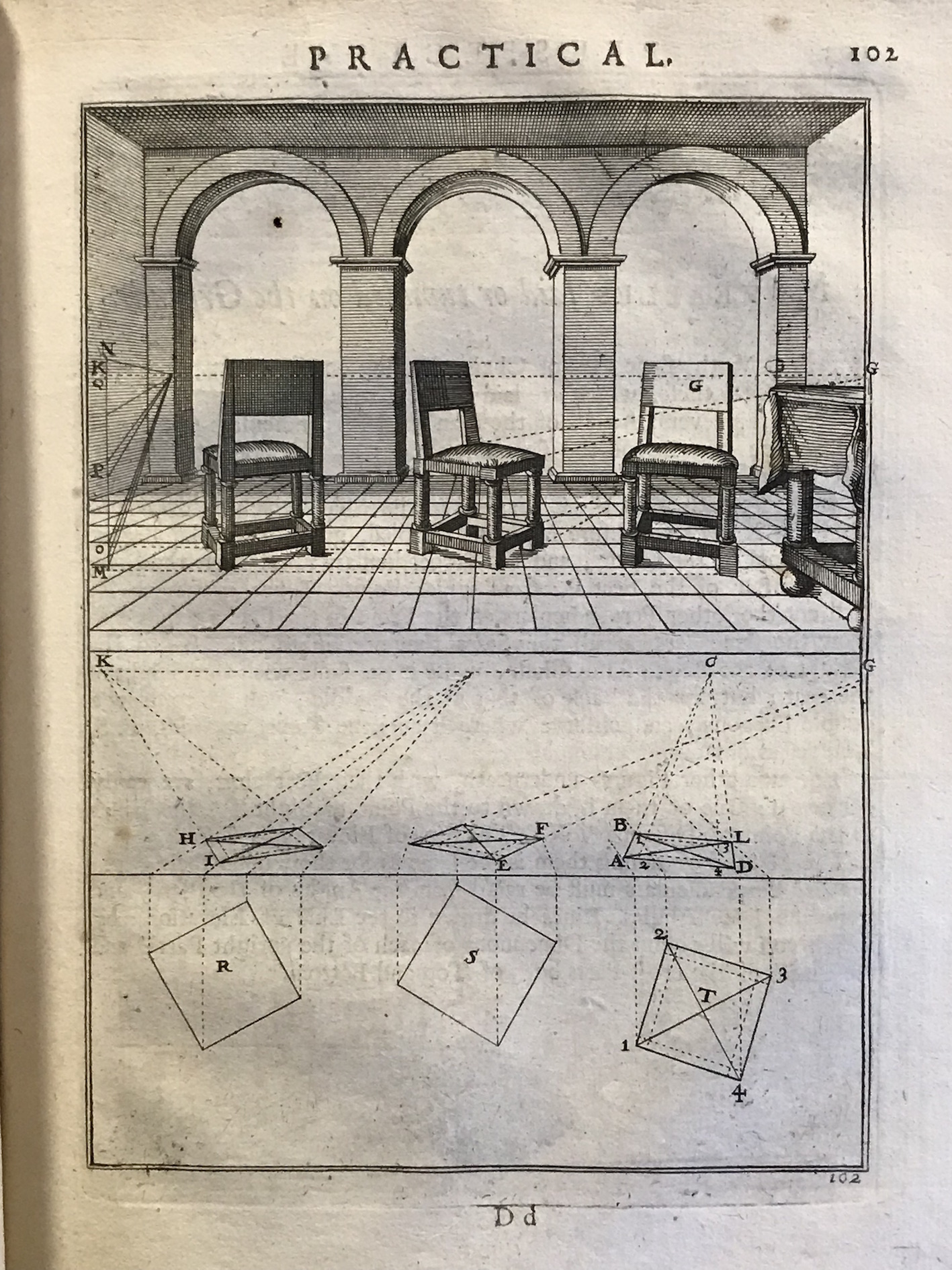
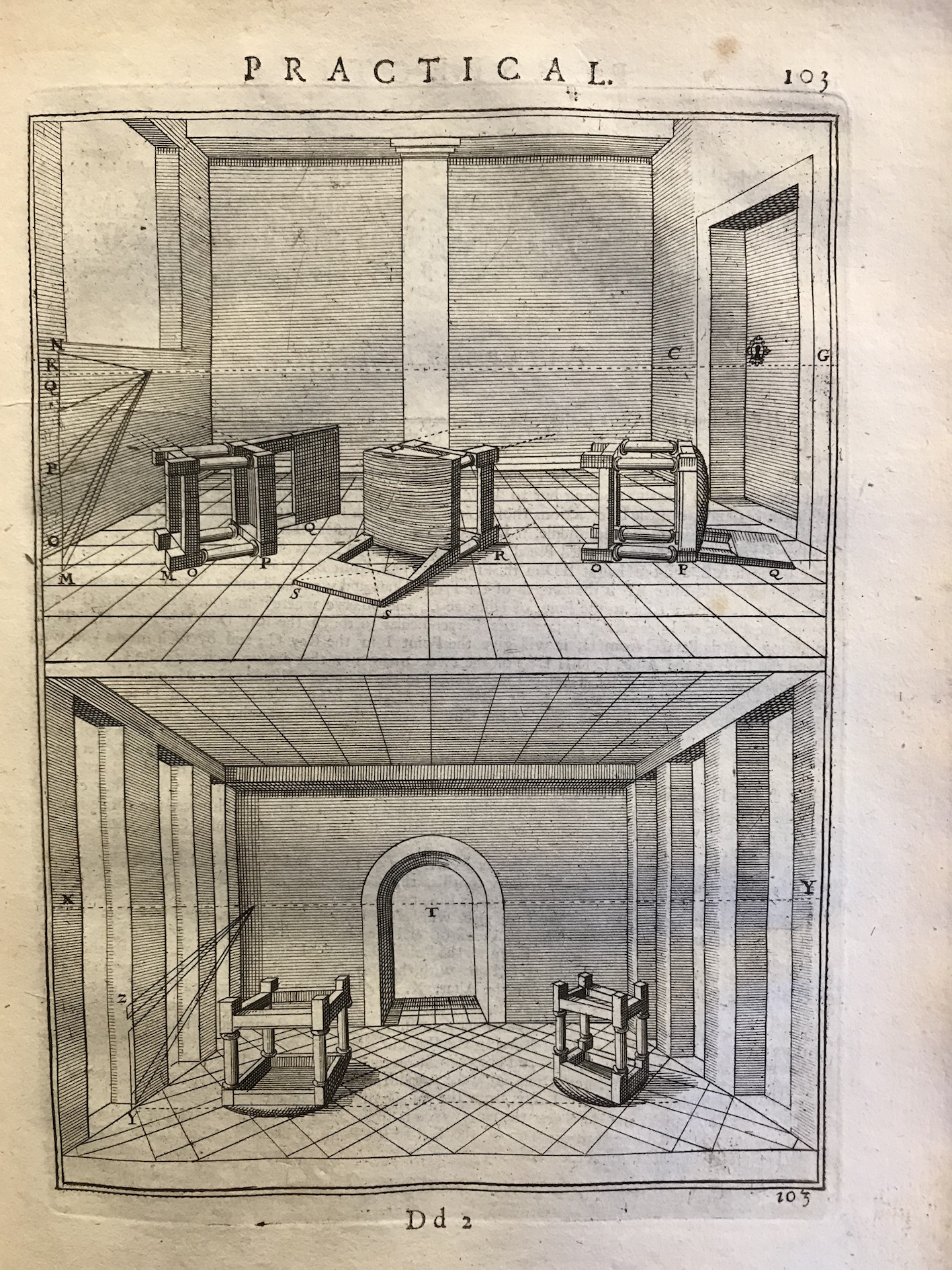
In the preface of The Practice of Perspective, Dubreuil attributes the breadth of the book’s content to the work of several of his contemporaries. Included in this list is French mathematician, Girard Desargues. Contrary to Dubreuil’s sense of legitimate referencing, Desagues felt plagiarised by the illustration included on page 118, which was taken directly from the mathematician’s Exemple de l’une des manieres universelles du S.G.D.L. touchant la pratique de la perspective sans emploier aucun tiers point, de distance ny d’autre nature, qui soit hors du champ de l’ouvrage (published in 1636), upon which Dubreuil’s entire method of perspective is heavily dependent. Outraged, Desargues began a public poster campaign against Dubreuil. In response, later editions contained disparaging comments about Desargues.
April Atkinson and Sophia Demoulas
Fully digitised copy of the 4th edition from the Getty Research Institute is available here.
